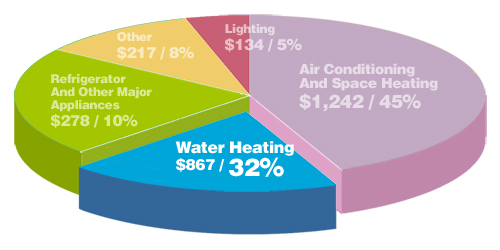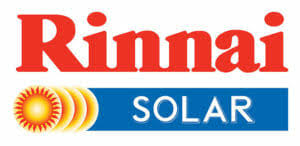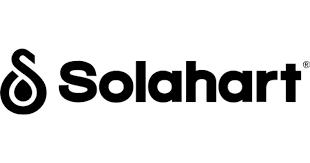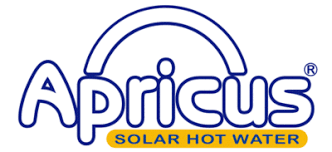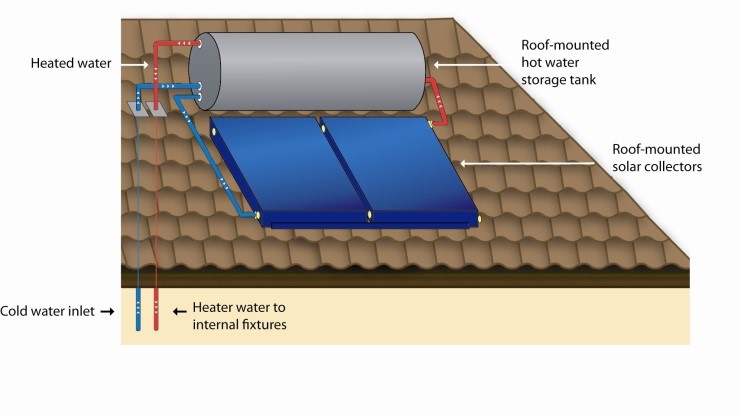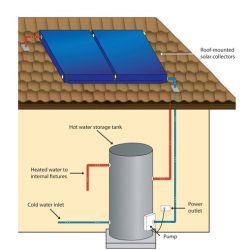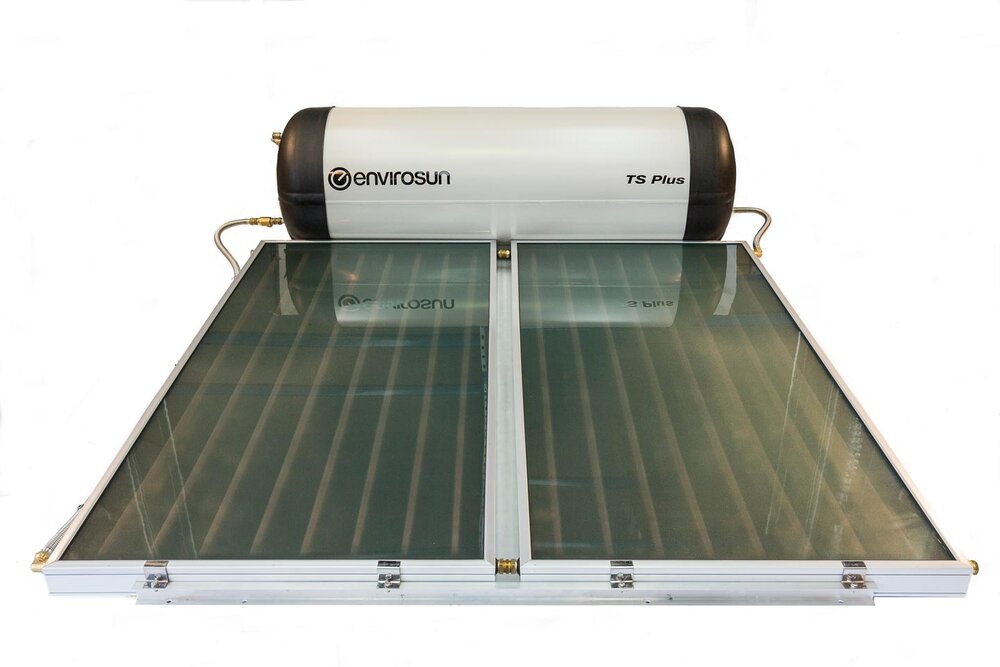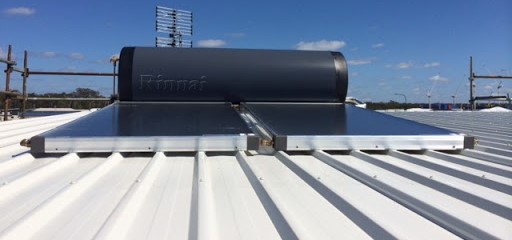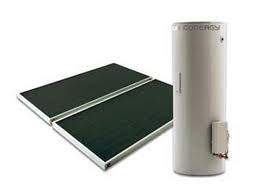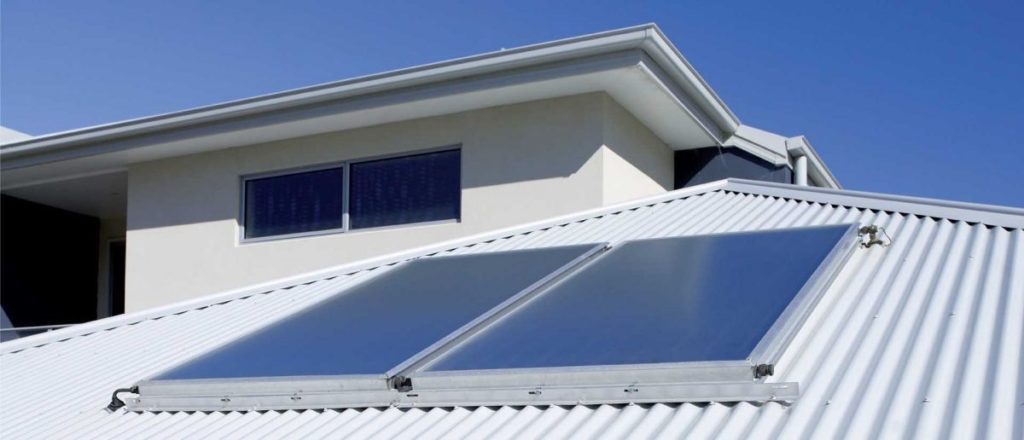Solar-powered Hot Water Systems


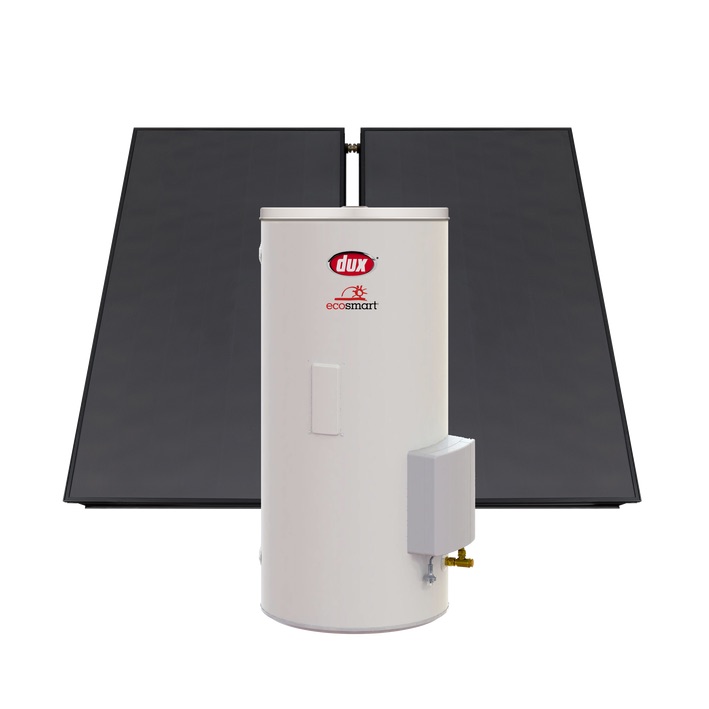
Solar hot water systems are available in two distinct configurations
Need solar hot water fitted quickly? We’re here to help!
Roof-mounted thermosyphon solar hot water systems.
Split-system, ground-mounted solar hot water systems
A split solar hot water system places the storage tank at ground level while only the solar collectors are roof-mounted. Collectors can be flat panels or evacuated tubes — however, evacuated tubes are generally unsuitable for Queensland’s conditions since they can overheat, boil off water and produce avoidable rumbling sounds.
How they work
Storage tanks commonly come in sizes such as 250L, 315L and 400L.
A temperature sensor at the panels and another at the tank monitor the differential between them.
When the collectors are around 10°C warmer than the tank water, a small circulation pump (typically 25W or less) kicks in, circulating roughly 2–3 litres per minute through the collectors.
This process moves heat from the collectors back into the tank, where natural convection causes the hottest water to rise to the top.
The pumps are quiet and use minimal electricity — most consume less power daily than a microwave clock.
Build & installation
Copper flow and return piping should always be used to withstand high temperatures.
At Maroochydore Hot Water, we run these pipes in a single continuous length with no joints or fittings inside the roof cavity and insulate them with 25mm high-temperature, UV-rated insulation to reduce heat loss.
Performance
Panel temperatures can reach up to about 120°C, and some systems allow storage tanks to get as hot as 75°C.
Once the tank hits its set temperature, water remains in the collectors until usage lowers the tank temperature enough to trigger circulation again.
Why quality matters
Selecting a trusted brand is essential. Many low-cost imports with inferior components have led to significant problems and unexpected expenses for homeowners. The extra cost for a dependable system is small compared with the long-term reliability and peace of mind it delivers.
Contact Maroochydore Hot Water on 1300 728 122 for straightforward, impartial advice on the right solar hot water system for your home.
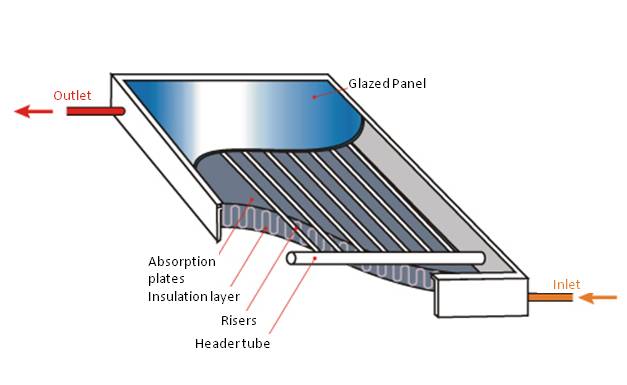
Flat-panel solar collector
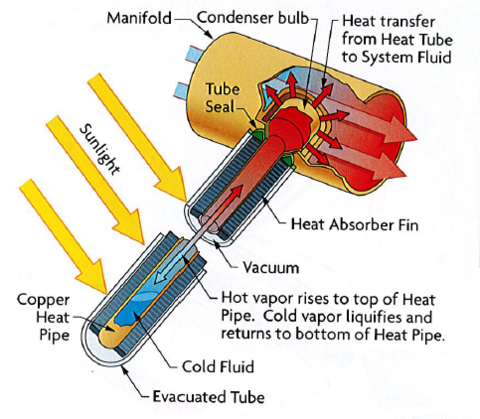
Evacuated tube solar collectors
Evacuated tube systems consist of multiple glass tubes, each housing a copper heat pipe filled with a heat-transfer fluid. The tubes slot into a top-mounted manifold on the collector, where solar heat is absorbed and passed on to the storage tank.
System design
They are offered in layouts of 12, 18, 24 or 32 tubes, chosen to suit tank capacity and installation needs.
Highly efficient—tube surfaces can reach around 250°C in strong sunlight.
Suitability
These systems were developed mainly for European-style climates, where solar intensity is lower and sun angles are reduced.
They perform well in cooler Australian regions such as southern NSW, Victoria, South Australia and southern WA.
In Queensland, however, evacuated tubes tend to be overly efficient, which can cause overheating, greater water loss and boiling noises from the tubes.
Considerations
Only a handful of suppliers still carry evacuated tube systems in Australia.
They usually cost about $1,000 more than flat plate collectors, without offering notable advantages in Queensland’s climate.
For most Maroochydore homes, we don’t recommend evacuated tubes; flat plate hot water systems offer better value and more reliable performance locally. If you need a Maroochydore plumber for installation or repairs of gas and electric hot water systems, we can help.
Contact Maroochydore Hot Water on 1300 728 122 for professional, impartial, fact-driven guidance from a local Maroochydore plumber with over 20 years servicing South East Queensland.
You can ring us on 0413 861 166 outside normal hours and on weekends.
At Maroochydore Hot Water, we hold a broad selection of solar hot water systems on-site for prompt installation. By maintaining stock of the leading models we supply, you won’t need to wait for parts to arrive—your new hot water system can be fitted without unnecessary delay.
We also provide Easy Payment Plans to help spread the initial cost. With terms ranging from 1 to 3 years and fortnightly repayments following a small deposit, your repayments can sit close to the savings you’ll achieve on your electricity bills.
Maroochydore Hot Water provides and fits solar hot water systems throughout Maroochydore—prompt, compliant and designed for long-lasting performance.

